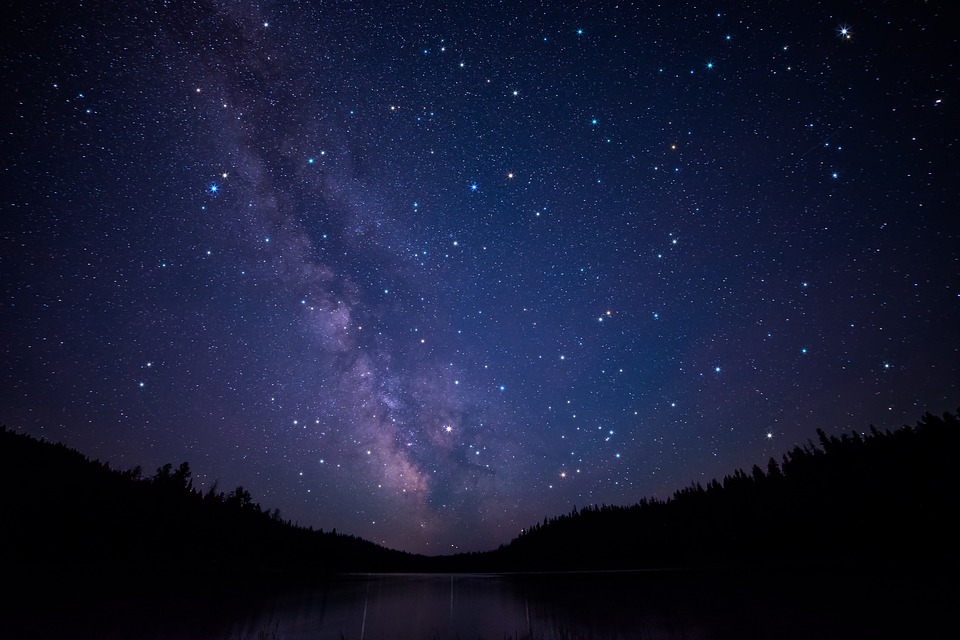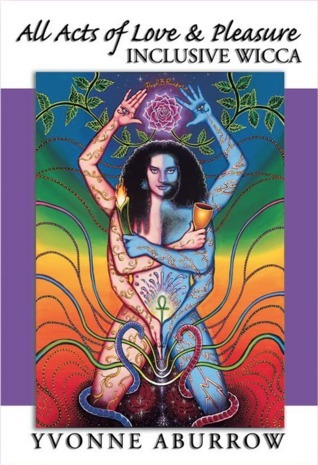JRR Tolkien loved ancient Pagan mythology, especially Norse mythology. He also loved trees, flowers, rivers and streams, mountains, woods, and landscape generally. His writing is infused with a love of Nature, as well as an in-depth knowledge of ancient cultures and mythologies. He was, however, a Catholic, both by upbringing and conviction. He wrote his legendarium as a supporting world for his invented languages; though the earliest version was intended “to restore to the English an epic tradition and present them with a mythology of their own”.
Tolkien and Pagan mythology
The earliest inspiration for Tolkien’s invented language and world was the Kalevala, the epic of Finnish mythology; and the Valar, the gods or angels (depending on your perspective) who dwelt in Valinor, were inspired by the gods of Asgard in Norse mythology.
He was also inspired by Old English literature including Beowulf, Norse sagas, the Poetic Edda, the Prose Edda, the Nibelungenlied, and other Germanic sources. The culture and language of the Rohirrim is pure Anglo-Saxon antiquity, with their great mead-hall and burial mounds and love of horses. And the Elder Futhark of the Runes is included in the end-papers of The Hobbit, whence I decoded it at the age of 11 or 12.
The Inklings frequently discussed the concept of mythopoeia. Lewis initially believed that mythology had no value, referring to mythology as ‘lies breathed through silver’; Tolkien disagreed, pointing out that mythology contains spiritual truths. To Tolkien, myth-making was the art of the sub-creator; just as humans were made in the image of God, so we inherit our sub-creative power from God. He wrote about this at some length in his essay On Fairy Stories.
Tolkien also explicitly referenced the svartálfar, dökkálfar and ljósálfar (“black elves”, “dark elves”, and “light elves” of Norse mythology). In The Silmarillion, the light elves or high elves were those who had dwelt in Valinor when it was illuminated by the Two Trees, Telperion and Laurelin. The Dark Elves were those who refused to go to Valinor. The Grey Elves were those who set out on the journey to Valinor, but lingered in Middle earth, and never made it to Valinor.
In his book Secret Fire: the spiritual vision of JRR Tolkien, Stratford Caldecott wrote that the worship of Morgoth by some humans in the early history of Middle Earth was a form of Paganism. However, I disagree, and would classify it as demonolatry. I corresponded with him about this (sadly I don’t have copies of the emails any more), and he conceded that it was demonolatry and not a form of Paganism.
Oddly, there is not much religion in Middle-Earth, though there is plenty of spirituality. Elves and humans do not worship the Valar, though they honour them (especially Varda, the kindler of the stars, known to the Sindar or Grey Elves as Elbereth Gilthoniel). The Númenoreans worshiped Eru Ilúvatar three times a year in a temple at the peak of Númenor, and a similar temple existed in Gondor.
Tolkien and Nature
The Lord of the Rings and The Silmarillion are full of descriptions of trees and flowers and landscapes. Who could forget the majestic mallorn trees and golden, star-shaped elanor flowers of Lothlórien? Or the simbelmynë that grew in Rohan mainly on the burial mounds of the Kings? Or the many other plants of Middle Earth that are mentioned in the books?

Elanor, or possibly simbelmynë [photo by Larisa K]

Tolkien with the pine tree in Oxford Botanical Gardens (photo: The Tolkien Trust)
Tolkien’s favourite character in LoTR was Faramir, who (in the book) resists the lure of the ring, and says to Frodo, “I would not take this thing, if it lay by the highway.” Faramir is in many ways similar to Robin Hood, a man of the woods, who loves the land of Ithilien, ancient lore and songs and stories. Faramir is close to Nature and also loves books. His closeness to Gandalf offended his father Denethor.
It is interesting that Faramir is able to resist the lure of the Ring (which represents worldly power and domination), perhaps because he is close to Nature. Another character on whom the ring has no effect at all is Tom Bombadil, who represents the old powers of Nature, and is addressed at one point as the Eldest. One wonders why Peter Jackson felt the need to remove Tom Bombadil from the film, and make Faramir susceptible to the power of the Ring? I think Tolkien would have been upset by the change to Faramir’s character in the film.
In fact, Tom Bombadil was created before The Lord of the Rings, and represented the spirit of the Oxfordshire and Berkshire countryside.
Tolkien frequently expressed sadness at the cutting down of trees (represented in the memorable scene when Saruman cuts down the trees in the Shire, or the destruction of the Two Trees of Valinor), and disapproved of industry and mechanization.
There are several characters in LoTR who love gardening, both Elves and Hobbits. It is this love of gardening that creates a special bond between Galadriel and Sam Gamgee, to whom she entrusts the seed of a mallorn tree and some earth from Lothlórien.
He also wrote very evocatively on the atmospheres of different places: the Meres of the Dead Faces (possibly inspired by the corpses in the mud of the Somme); the wrath of the Mountain Caradhras as the Fellowship of the Ring try to get across the passes; the dust and ashes of Mordor; the majestic gloom of Moria; the spooky Barrow Downs; the uncanny atmosphere of the Old Forest on the edge of the Shire, and the mysterious twilight of Fangorn.
The night and the starlight were clearly very important to Tolkien. Various scenes evoke the beauty of the stars: the crown of Durin reflected in the waters of Kheled-zâram; the Elves awakening in the starlight by the waters of Cuiviénen; and the crystallization of starlight in the Silmarils, and in the magic container of starlight given to Frodo by Galadriel, which is not only a light in the darkness but also has beneficent power. One of the earliest images in Tolkien’s mythos was that of Eärendil the Mariner, sailing through the sea of stars.

By the starlit waters of Cuiviénen [photo by James Wheeler]
Tolkien on magic
In Tolkien’s world, magic is a relatively neutral power, which can be turned to both good and evil ends. The episode when Pippin gets hold of a Palantir illustrates this ambiguity. The palantíri (magic crystal balls that enable far-seeing) were originally created in Valinor by Fëanor, the maker of the Silmarils. However, like the Silmarils, they are very alluring, and Pippin sneaks over to take a look, and is temporarily ensnared by Sauron, who also possesses a Palantir.
The Istari or wizards are Maiar, a class of being greater than elves but less than Valar. Sauron, Saruman, Gandalf, and Radagast are all Maiar, but Sauron was corrupted by Morgoth, and Saruman was eventually corrupted by lust for power. Radagast works primarily at protecting plants and animals, but Gandalf takes a special interest in Hobbits and humans. It is unclear how much magic the Istari use, though other Maiar such as Melian use it quite a lot.
Gandalf is the keeper of one of the three Elven-rings, whose power depends on the One Ring, but which were never corrupted by Sauron. The Elven rings are named after air, fire, and water. The other two rings were held by Galadriel and Elrond, and enabled them to protect Lothlórien and Imladris (Rivendell).



The thing that corrupts in Tolkien’s legendarium is the lust for power and riches. This lust for power is illustrated by numerous characters: Morgoth, Sauron, Saruman, Denethor, Boromir. Even the hobbits and some of the elves are momentarily tempted by the power of the Ring: but Galadriel resists its power, even when it is freely offered to her, and says “I shall diminish and pass into the West”. Frodo is saved from his last-minute temptation not to throw the Ring into the Crack of Doom by Gollum’s last-ditch attempt to steal it from him.
It seems that magic, when wielded in accordance with the will of Eru Ilúvatar, is legitimate; but when it goes against the Divine Will, it is wrong. Eru Ilúvatar is the source of all life, and of the Flame Imperishable, without which created beings would be mere automata, as Eru explains to Aulë, after Aulë creates the dwarves, but only Eru can give them life and sentience.
Tolkien expressed a deep love of all things Pagan – magic, mythology, and Nature. But his religion was Catholicism and he was deeply inspired by the Blessed Virgin Mary. Some Pagan writers have suggested that both Tolkien and CS Lewis might have become Pagans if they had been born fifty years later, but then if they had been born fifty years later, their characters would have been formed by a completely different zeitgeist and historical context, so that speculation seems somewhat fruitless to me.
However, they were writing around the same time as the first flowering of the Pagan revival, when Gerald Gardner and Ross Nichols were just getting started with Druidry and Wicca, and when there were numerous literary outpourings of Paganism, such as Rudyard Kipling’s Puck of Pook’s Hill, the poetry of WB Yeats, and the novels of Dion Fortune. Paganism was part of the zeitgeist.
Many Pagans are thankful to both Tolkien and CS Lewis for introducing us to Pagan mythology, and instilling in us a love for trees and animals and birds, landscape and mountains and forests and rivers.
Further reading
- Yvonne Aburrow (2019), Gods or Angels: CS Lewis and Paganism [a guest post at A Pilgrim in Narnia]
- Stratford Caldecott (2003), Secret Fire: The Spiritual Vision of J.R.R.Tolkien. London: Darton, Longman & Todd Ltd.
- John Garth (2011), Tolkien and the Great War: The Threshold of Middle-earth. HarperCollins.
- Ronald Hutton (2001), The Triumph of the Moon: A History of Modern Pagan Witchcraft. Oxford: Oxford University Press.
- Ronald Hutton (2003), Witches, Druids and King Arthur. London: Hambledon & London.
- Gareth Knight (1990), The Magical World of the Inklings. Shaftesbury: Element Books.
If you enjoyed this post, you might like my books.



Great read. I think without Tolkien far less people would have been drawn to Paganism. Whilst I’ve read Lord of the Rings I never fell in love with it as much as some people possibly due to the style of the language. That was a long time ago (when I was about 13 I think!) so I’m considering revisiting it along with some of Tolkien’s other work and hoping I will enjoy it more now I know about the links to Pagan mythology. I’d say that reading lots of fantasy, on the whole, was one of the things that drew me to Paganism. So much seems to be rooted in deeper myths and sometimes fantasy characters can be real as gods.
LikeLiked by 3 people
Thank you 😊
I was and am a language nerd so Tolkien’s invented languages really spoke to me, whereas most other attempts at invented languages in fantasy books can’t hold a candle to his.
LikeLike
One thing that I find interesting, and rather sad, is that in many online discussions of Tolkien, it is obvious that many readers just don’t get what it is all about — that power corrupts. They ask questions about the relative “powers” of wizards and balrogs, of orcs and elves, and which creatures would win in a fight if pitteg against other creatures. And yet the whole book is about the renunciation of power, and bring unwilling to use it.
I suspect that this outlook has been fuelled by computer games, and which characters have “powers” that must be quantified for the purpose of the game, and most such games turn on the increase or decrease of the powers of the different characters, and the only variant is the complexity of construction.
LikeLiked by 2 people
I think you’re right Steve. And it wasn’t helped by Peter Jackson’s removing Tom Bombadil from the movie, and making Faramir susceptible to the power of the Ring. I’m still upset about it. Tolkien made it very clear that the “little people” can contribute to sweeping change.
By removing Tom Bombadil, he also removed the crucial scene on the Barrow Downs, and the acquisition of Merry’s sword, and the lovely line about “Glad would he be who made that sword to know its eventual fate” (which Tolkien went back and inserted in the text in a subsequent draft. Imagine typing out the whole of LoTR on a typewriter more than once, and then having a film director excise your brilliant inserted bits. Grr.)
LikeLike
This was such an excellent read.
LikeLiked by 1 person
Thanks so much! And thanks for the repost 😊
LikeLike
Pingback: Wonder and delight: Tolkien and Pagan ideas — Dowsing for Divinity – Authentikei
Oh, this is wonderful. Yes, I too mourn the absence of Tom Bombadil from the film’s. As a ten year old, when I first read the books, I was blown away by him and I loved the relationship between him and his wife as she is also clearly a nature deity.
LikeLiked by 1 person
Thank you 😊
LikeLiked by 1 person
I also liked your Narnia post very much but I couldn’t leave a comment.
LikeLiked by 1 person
Thank you!
LikeLiked by 1 person
It is sad that Bombadil has been removed from every adaptation I can think of. The chapter set in his house has dreamlike otherworldly quality very similar to the Cottage of Lost Play. I feel it was something very close to Tolkien’s heart, perhaps even a place of dream and refuge for him while recovering from his wartime experiences?
LikeLiked by 1 person
Yes it’s a real shame. I like Bombadil’s house and the idea that he’s a spirit of the land and therefore impervious to the ring’s effects (and also Tolkien’s explanation of why he couldn’t take the ring to the crack of Doom).
The only thing I don’t like about him is his annoying habit of speaking in rhyme. That’s easy to fix, though, as all they have to do is have him speak prose instead.
LikeLike
I once knew a girl who would sometimes speak in rhyme. I found it rather disconcerting, a side effect of drug use in her case.
There is a slight sense of delirium with Bombadil, and also The Cottage, which is perhaps why I tend to conflate them? I got a similar feeling when reading the final installment of the Gormenghast Trilogy, Titus Alone, which I am inclined to attribute to Mervin Peakes advancing illness
IIRC Tom first appeared in The Adventures of Tom Bombadil, which I suppose would explain the rhyming.
LikeLiked by 1 person
After reading volume 1 of LoTR, I always find that Tom Bombadil’s songs have become an earworm.
I agree about the similarities with the Cottage of Lost Play. And yes the standalone Bombadil book was published first (don’t know if he wrote the poetry for it first; he probably did).
LikeLike
I have become much more of a Silmarillion snob in recent years, ever since finally getting around to reading it. It is a dense difficult work, yet so beautiful and moving and rewarding of effort. It feels far more of a cohesive whole to me – ironic since it was never completed in his lifetime.
LoTR feels like far more of a patchwork, and you can see the seams in places. Of course the Silmarillion was a labour of love, whereas LoTR was at least partly motivated by a commitment to his publisher.
I love both books, but if I could only take one volume with me to the proverbial desert island, I know which one it would be.
LikeLiked by 1 person
I too love the Silmarillion— especially the creation sequence
LikeLike